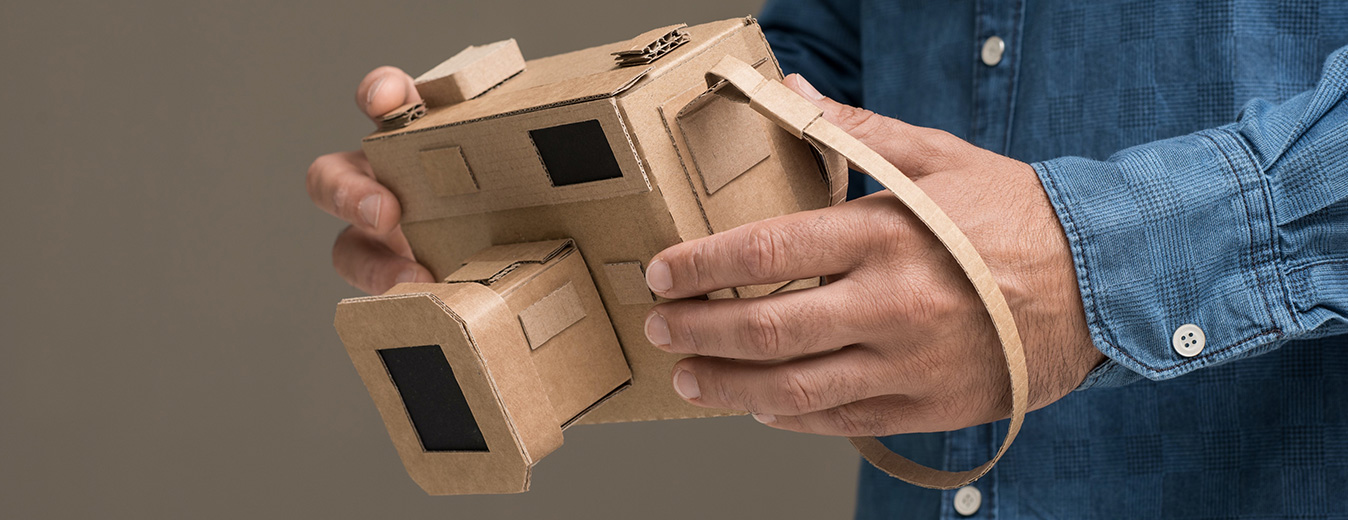To understand a problem, very basic prototypes also known as Minimum Viable Products (MVPs) can help. We are using cardboard and tape at this point. How quickly can we demonstrate an idea? It does not even solve the problem, but you can hold it and interact with it. It just needs to show that it is possible. This usually takes a few hours, not days, weeks, or months.
An aside: Why is it so important to do this quickly and with such basic materials? It is often surprising how much you can learn about your ideas from the crudest of tests. You may learn that a slight tweak to your idea will help it greatly. You might also learn that it is a bad idea. Either way it is much less expensive to find these things out after a few hours of work and some cut up cardboard, than it is to learn after two months of engineering development time and thousands of dollars in custom made components.
After we get though our crude minimum viable product we move to a slightly more refined version. The main difference is that this prototype will actually function. In our case, we are often working with wood, steel, PVC pipe, etc. We are still working quickly and resisting the urge to spend too much time in design. These prototypes are usually built in a few days using basic hand tools.
At this point we hope to have learned enough about our ideas to dive into the design of a fully functioning field ready prototype.
Another aside: The whole point is to learn as much as possible without spending too much time or money. As painful as it sounds, if the idea turns out to be no good at this point it is better to accept this now and go back to the drawing board. It will still be less expensive than learning the lesson after engineering design and fabrication.
Now we introduce the level of design required to bring a solution to life. This is where mechanical design in CAD software such as SolidWorks can begin. Custom circuit boards and embedded software, if needed, can be designed. This prototype will likely be ready to go into the field, but usually will require another iteration.
The next version might contain lessons from field use. Additional changes to design for manufacturing may happen in the next prototype as well.
Lastly, these quick iteration cycles allow for natural contact with stakeholders. At each step they get to touch and see progress. It will often jog their mind in such a way that brings more information to the table. Most importantly, it prevents bad surprises for all parties involved.
If you liked what you read, please share! You can do this easily by clicking the round buttons with the logo of your preferred social media platform at the top of this post.

